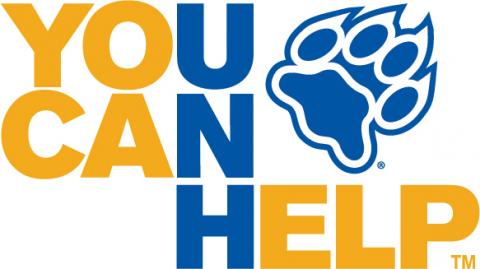Interpersonal violence (sexual assault, stalking, harassment, relationship abuse) impacts many people on college campuses, and UNH is no exception. Other forms of violence, such as microaggressions, stereotyping, and identity-based harassment are also present here. Everyone in our community has a role to play in creating a UNH free from violence, and showing up as an active bystander is a vital way to shift social norms and prevent harm.

Wildcats are Active Bystanders
As a bystander, you may wonder what you can do to help.
Sometimes, active bystanders are needed in heightened or escalating incidents of explicit violence. Other times, active bystanders serve to disrupt the use of offensive language, hurtful jokes, or objectifying comments. Regardless of the circumstances, recognizing a potentially dangerous or harmful situation and choosing to intervene is active bystander behavior.
It's not always easy to show up as an active bystander. There's a lot that can get in the way: fear of judgment, lack of self-confidence, safety concerns, gaps in knowledge or skills, power imbalances, shyness...the list goes on. Ultimately, choosing to act means deciding that your responsibility to our community and the risks of inaction outweigh these various barriers and concerns about intervening.
Steps to becoming an Active Bystander[1]
- Notice the situation: Be aware of your surroundings.
- Interpret it as a problem: Recognize that someone needs help or that something harmful is occurring.
- Feel responsible to act: See yourself as being part of the solution.
- Know what to do: Have a toolbox of strategies for intervening.
- Intervene safely: Take action while foregrounding others' safety as well as your own.
How to Intervene Safely
There are different ways you can choose to intervene. Some are better suited to certain situations, some are better suited to certain types of personalities, relationships, or settings. There is no one-size-fits-all blanket approach to being an active bystander. The type of action you take should depend not only on the situation, but on your safety and comfortability/confidence with that method.
The 5 D's of Bystander Intervention
Approach the person causing harm, name the inappropriate behavior.
- “You’re making them uncomfortable. Please stop.”
- “That word can be really hurtful. Can you choose a different one?”
- “They’ve asked you to leave them alone. Now I’m also asking.”
Create a diversion to interrupt harm and/or give the target an opportunity to remove themselves.
- “Hey, come be my partner for pong!”
- “Someone in the kitchen is looking for you.”
- Pretend to "accidentally" spill or drop something to shift attention or diffuse a situation.
Ask someone else for help, such as a supervisor, bouncer, RA, friend, etc.
- “Can you come over here? Someone’s getting really heated.”
- “Can you help me brainstorm some ideas?”
- “Will you help? I’m worried but not sure what to do.”
Create a record of the incident or situation.
- Record video or take photos (do not share or post these without asking permission first).
- Write down what you see with specific details, noting date & time.
- “Do you mind if I start recording?”
Circle back later if you didn’t intervene in the moment.
- “I’ve been thinking about something you said yesterday…”
- “Can we talk about what happened this morning?”
- “I heard raised voices the other day and wanted to check in on you.”
What can my friends and I do to be safe?
Act as a community. Remember these tips:
Have a plan.
Talk with your friends about your plans for the night before you go out. Do you feel like drinking? Are you interested in hooking up? Where do you want to go? Having a clear plan ahead of time helps friends look after one another.
Go out together.
Go out as a group and come home as a group; don't leave your friend(s) behind.
Watch out for others.
If you notice someone walking alone, ask if they want to join you. If you see that someone's heavily intoxicated, check in on them. If you hear someone being harassed or catcalled, say something.
Diffuse situations.
If you see a friend coming on too strong to someone who may be too drunk to make a consensual decision, interrupt, distract, or redirect the situation. If you are too embarrassed or shy to speak out, get someone else to step in.
Check in.
Don't assume that it will always be obvious when someone is fearful, distressed, or hurt. Check in with the people around you and demonstrate that you care.
Lead by example.
It often takes one to go first; this makes it acceptable for others to follow. Be a leader and set an example of active bystander behaviors in your communities, friend groups, classrooms, and organizations.
Know your resources.
You are never alone in the work of anti-violence, harm prevention, and community care. Know your resources, even if think you'll never need them - someone else might, and connecting others to help is a powerful way to show up as an active bystander.
Being a part of the UNH community means living by a collective standard.
The standard that we relate to each other with respect and responsibility. The standard that everyone deserves bodily autonomy, that everyone deserves safety.
There is so much more to learn about the field and practice of bystander intervention. If you think that your class, org, chapter, team, etc. could benefit from a bystander intervention workshop, request The SHARPP Center's "You Can Help" program!
[1] Latane, B. & Darley, J.M. (1970)